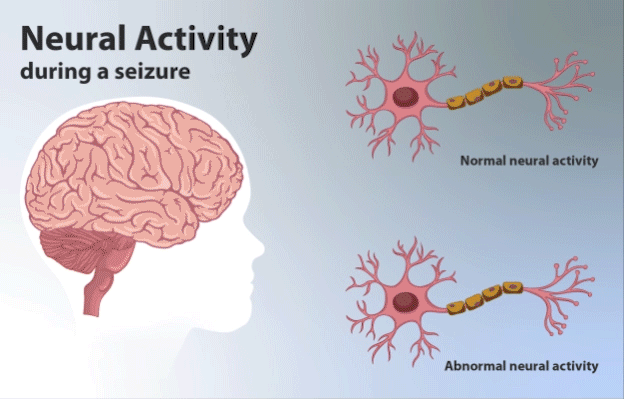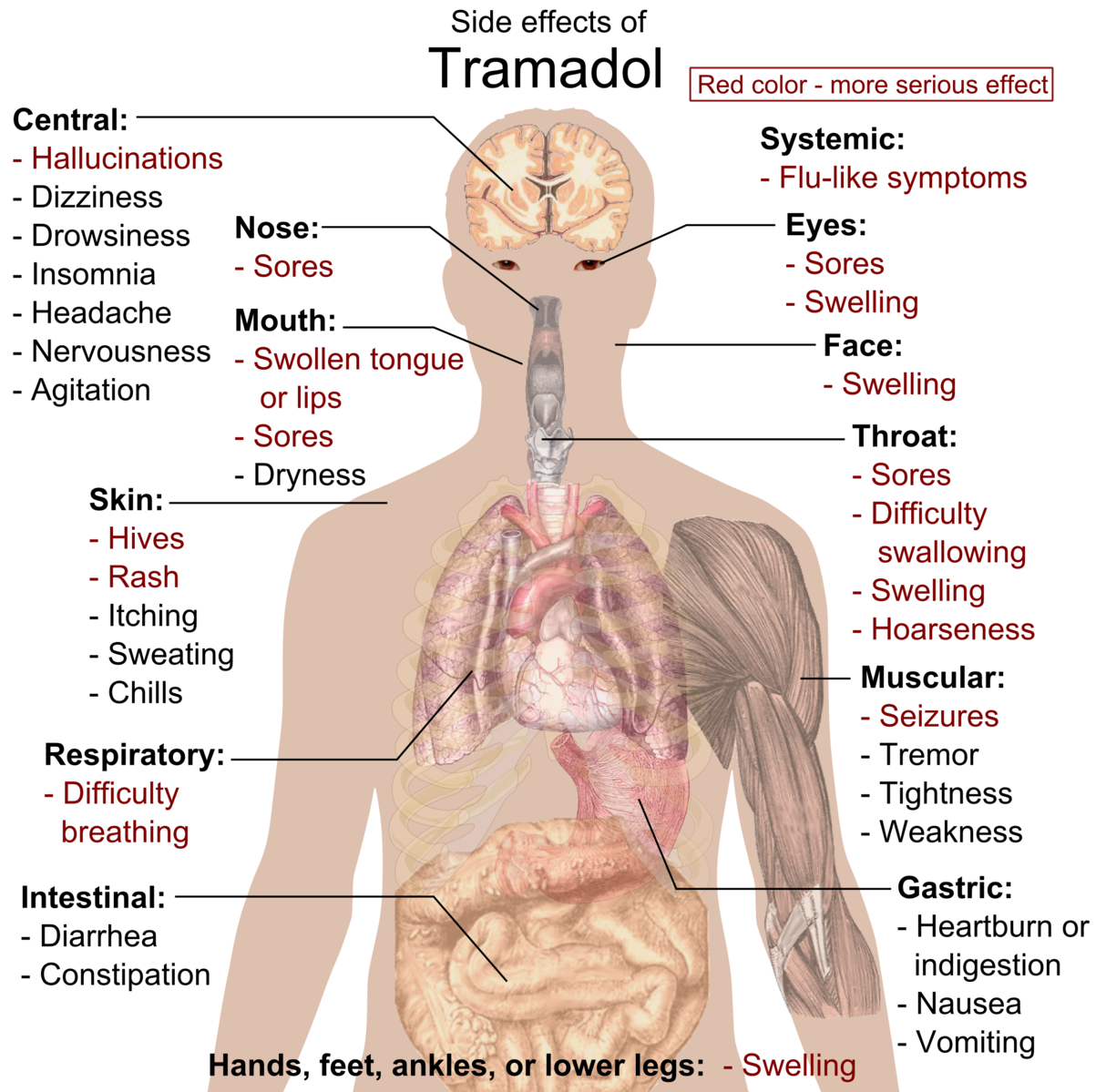Difference Between Seizure and Tremor
What is Seizure and Tremor?
Both seizures and tremors are medical conditions that involve involuntary shaking in either one part or multiple parts of the body. Tremors are one of the symptoms of seizures.

Seizure
Seizures are a medical condition that are indicative of an underlying neurological problem, which may be a brief or long-term issue. Seizures happen because of an abnormal upsurge of electrical activity in the brain, due to chemical changes in nerve cells.

Tremor
Tremor is an uncontrolled and involuntarily movements that cause shaking in one or multiple parts of the body. Tremors affect mostly hands but can also happen in the legs, torso, head, arms and vocal cords.
Difference between Seizure and Tremor
Definition
Seizure
It is a neurological medical condition which happens when there is a sudden and uncontrolled electrical disturbance in the brain.
Tremor
Involuntary and uncontrollable rhythmic movement of one part of the body or one limb of your body.
Types
Seizure
Seizures are of following types;
- Absence seizures – Also called Petit Mal seizure. It is the sudden, brief lapses of consciousness. Affect most children of 5-9 years old.
- Tonic-clonic – Also termed as Grand Mal Seizure. It is defined as a loss of attention and consciousness and extremely violent muscle contractions.
- Atonic seizures- These are also termed as akinetic seizures. These cause sudden and abrupt loss of muscle strength.
- Clonic seizures – It means sustained rhythmical jerking rhymical. It involves jerking movements triggered by the repeated stiffening and relaxing of muscles
- Myoclonic seizures – It is defined as a short-lived shock-like jerks of a muscle or group of muscles.
Tremor
Tremors are of following types;
- Resting tremor – It happens when the muscle is relaxed, for example when the hands are resting on the lap
- Postural tremor – It happens when an individual is holding a position against gravity, for example arm or leg outstretched
- Action or kinetic tremor – It happens at the time of voluntary movement
- Intention tremor – It is a dyskinetic disorder which involves purposeful and voluntary movement towards a target, for example lifting hand to write.
- Task specific tremor – This type of tremor emerges during a particular activity
- Nystagmus Tremor – This tremor is used to describe unintentional repetitive eye movements that make it impossible for a person to keep their eyes fixed on any given object
Symptoms
Seizure
- Temporary confusion
- Changes in behaviour
- A staring spell
- Extreme tiredness after a seizure
- Strange sensations and emotions
- Involuntary urination
- Aura
- Uncontrollable jerk like movements of the legs and arms
- Frothing from the mouth
- Loss of consciousness or awareness
- Tongue biting
- Emotional or cognitive symptoms, such as déjà vu, fear, or anxiety
- Sudden falling
- Tasting a bitter or metallic flavour
- Teeth clenching
Tremor
- Shaky and Quavering voice
- Uncontrollable nodding head
- Tingling or numbness in any part of the body
- Tremors triggered due to emotional anxiety
- Uncontrollable shaking occurring intermittently for brief periods of time
- Nodding head
- Balance problems (in rare cases)
- Protruding eyes
- Unexplained weight loss
- Perspiration
- Goitre
- Stooped posture
Life-threatening symptoms of tremors include;
- Nonreactivity to light or pupil size that is abnormal pupil size
- Loss of consciousness or confusion for a short period of time
- Breathing with difficulty
- Head Stammering (speaking difficulty or difficulty in understanding speech)
- Paralytic attack
- Changes in vision or loss of vision
- Nystagmus (involuntary rolling of the eyes)
- Rigid trunk
- Slurred speech
- Loss of strength (Weakness)
Causes
Seizure
The most common causes of seizure are;
- Epilepsy
- Any type of brain injury (like stroke, trauma, stroke, brain infection, or a brain tumor)
- Drug abuse
- High fever, usually associated with an infection for example – meningitis
- Electric shock
- Congenital brain defects (Brain problems that occur before birth)
- Inadequate sleep
- Low blood sodium (hyponatremia), which can happen with diuretic therapy
- Illegal or recreational drugs, like amphetamines or cocaine
Tremor
The most common causes of tremors are:
- Muscle fatigue
- Prescription drugs
- Injuries
- Deficiencies of magnesium and thiamine
- Ingesting too much caffeine
- Lack of sleep
- Lack of vitamins
- Increased stress
- Stress
- Aging
- Low blood sugar levels
Neurological disorders or health conditions that can result in tremors include:
- Brain injury that is traumatic
- Low blood sugar (hypoglycemia)
- Stroke
- Wilson’s disease
- Chronic kidney disease
- Multiple sclerosis (the immune systems attacks spinal cord and brain)
- Parkinson’s disease (a neurodegenerative disease caused by loss of dopamine-producing brain cells)
- Alcoholism
- Hyperthyroidism (the body release nigh amounts of thyroid hormone)
- Neurodegenerative diseases that destroy parts of the brainstem or the cerebellum
Some other causes of tremors include use of drugs and medications (Amphetamines, caffeine, cocaine, corticosteroids, SSRIs) or alcohol, mercury poisoning, or the withdrawal of drugs such as benzodiazepine or alcohol.
Treatment
Seizure
Medications – Carbamazepine, Phenytoin, Valproic acid, Oxcarbazepine, Lamotrigine, Gabapentin, Topiramate, Phenobarbital.
Surgery – Surgery is meant to prevent seizures that always originate in the same place in the brains.
Vagus nerve stimulation (VNS) – It is a medical treatment that involves delivering electric impulses using an instrument that is implanted beneath the chest skin that facilitates the stimulation of the vagus nerve in the neck, triggering signals to the brain that inhibit seizures.
Responsive neurostimulation – an instrument is implanted in this treatment on the surface of the brain tissue to detect seizure and with the help of electrical stimulation prevent the seizure
Deep brain stimulation– In this, the electrodes are implanted in different areas of the brain to provide stimulation directly to the brain to help prevent the spread of seizures
Dietary therapy – Low carb diet called keto diet is helpful in preventing seizures.
Tremor
Medications (Betablockers and anticonvulsant) – Gabapentin (Neurontin), primidone (Mysoline), propranolol (Hemangeol, Inderal, Inderal XL, and InnoPran XL) and topiramate (Topamax).
OnabotulinumtoxinA (Botox) injections– These injections are helpful in treating voice and head tremors.
Tranquilizers – Benzodiazepine drugs such as clonazepam (Klonopin)
Surgery – Only considered in extreme cases, where symptoms are not getting controlled by other forms of treatment. Surgery involves thalamotomy (operating on) or the brain stimulation (electrical stimulation of an area of the brain called the thalamus).
Summary
The points of difference between Seizure and Tremor have been summarized as below:

- Difference Between Global Warming and Greenhouse Effect - May 18, 2024
- Difference Between Vaccination and Immunization - March 3, 2024
- Difference Between Selective Mutism and Autism - February 25, 2024
Search DifferenceBetween.net :
1 Comment
Leave a Response
References :
[0]Deykin, E. Y., & MacMahon, B. (1979). The incidence of seizures among children with autistic symptoms. The American journal of psychiatry.
[1]Findley, L. J. (1996). Classification of tremors. Journal of clinical neurophysiology, 13(2), 122-132.
[2]Puschmann, A., & Wszolek, Z. K. (2011, February). Diagnosis and treatment of common forms of tremor. In Seminars in neurology (Vol. 31, No. 01, pp. 065-077). © Thieme Medical Publishers.
[3]Stafstrom, C. E., & Carmant, L. (2015). Seizures and epilepsy: an overview for neuroscientists. Cold Spring Harbor perspectives in medicine, 5(6), a022426.
[4]Image credit: https://commons.wikimedia.org/wiki/File:Side_effects_of_Tramadol.png
[5]Image credit: https://commons.wikimedia.org/wiki/File:Depiction_of_neural_activity_during_a_seizure.gif

I don’t usually talk much on the internet but I had to open up this time because a miracle happened in my life and my uncle’s life. After struggling with Amyotrophic Lateral Sclerosis ALS/MND, and My uncle with Parkinson’s Disease PD too, for five years, We finally got helped by Dr. Ziza’s, Worldherbsclinic Head doctor. keeping it to myself will be selfish of me. We used his herbal remedy for Three months and was fully reversed and now we have no symptoms of both condition. I urge you all having ALS/MND, and Parkinson’s PD to give him a try. Worldherbsclinic will live forever.